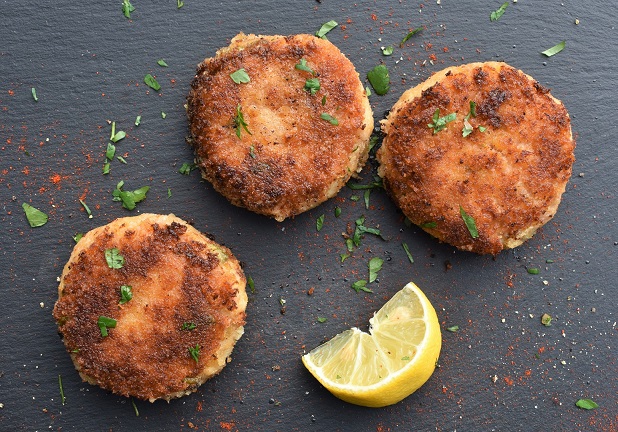
Yellowfin Tuna vs Bluefin Tuna
I’ve never actually explored the difference between yellowfin and bluefin tuna. I guess yellowfin has yellow fins right??
I mean, they are both popular, and people love to talk about them like they are two completely different worlds of fish. So, I decided to dig into it and see what sets them apart. Whether you are grabbing a sashimi plate or looking for something fancy for the grill, knowing the differences might just make your next meal even better.
Difference Between Blue and Yellowfin Tuna
First off, these two types of tuna might look similar, but they have got some real differences. Yellowfin tuna, as the name suggests, have bright yellow fins and are usually smaller than bluefin. Yellowfin are often found in tropical and subtropical waters. They tend to be a bit more common in the market, and because they’re a bit smaller, they’re faster and easier to catch in large numbers.
Bluefin tuna are on the other side of the spectrum. These are the big boys of the tuna family. They can get absolutely massive…. up to 1,000 pounds or more! Bluefin are more cold water fish and are harder to catch. So when you see one on the market or at a restaurant, you can guess it wasn’t easy to get it there.
Bluefin Tuna Record
The biggest bluefin tuna ever weighed was an Atlantic bluefin caught off Nova Scotia. It weighed 1,496 pounds.
Check out our guides on:
How to Catch Yellowfin Tuna
How to Catch Bluefin Tuna
Bluefin vs Yellowfin Tuna Taste
This is the part everyone really cares about, right? The taste. If you’ve ever had yellowfin, you know it’s lighter and more delicate. The flavor is mild and the meat is leaner. It’s perfect if you’re into fish that’s a bit lighter and less fatty.
Bluefin, though, is on another level. It’s rich, buttery, and has a lot more fat. That’s what makes it stand out. People who are crazy about sushi (or even just grilled tuna) will often say bluefin is the superior choice because it melts in your mouth. It’s more indulgent and has that luxurious vibe to it.
Yellowfin vs Bluefin Tuna Sashimi
Sashimi lovers know there is a difference when it comes to these two types of tuna. Yellowfin tuna sashimi is lighter in color, usually a bright pink and the texture is firmer. It’s refreshing and clean tasting, and because it’s a bit more affordable, you will see it a lot more often.
Bluefin sashimi, though, is a whole different experience. The meat is darker, more of a deep red or even purple. It is richer, fattier, and almost creamy. It’s the kind of thing that makes sushi chefs excited because it’s a delicacy. But that also means it’s not something you see every day, especially at your average sushi joint.
Bluefin vs Yellowfin Tuna Price
Speaking of seeing bluefin every day, let’s talk money. Bluefin tuna is super expensive. It is basically the luxury car of tuna. In fact, at auctions a single bluefin can sell for thousands of dollars. Why? Because it’s rare, hard to catch, and the demand for it (especially in Japan) is through the roof.
Yellowfin tuna on the other hand, is much more affordable. You will find it in supermarkets and restaurants without having to break the bank. It’s still delicious and popular, but it’s not going to cost you an arm and a leg like bluefin might.
Bluefin vs Yellowfin Tuna Meat
When it comes to the meat itself, the difference is pretty noticeable. Yellowfin has a lighter pinkish meat, and like I mentioned earlier, it is leaner. That makes it great for grilling or searing and it holds up well in different dishes like poke or tuna steaks. It is versatile and has a nice bite to it.
Bluefin meat is much richer, darker, and loaded with fat. If you love fatty cuts like toro, then bluefin is your go to. The meat is so soft, and it literally melts when you eat it. That is why it’s so sought after in high end sushi restaurants.
Yellowfin vs Bluefin which one should you choose?
Honestly, it depends on what you are in the mood for AND your budget. If you want something light, affordable, and versatile, yellowfin is a great choice. But if you’re going all out and want a decadent, melt-in-your-mouth experience, bluefin is the way to go… Just be ready to pay the price!
In the end, both yellowfin and bluefin tuna have their place in the food world, and you can’t go wrong with either. Just remember, bluefin is a bit more of a special occasion fish, while yellowfin is perfect for any day of the week.
FAQ Yellowfin vs Bluefin Tuna
Which is healthier, yellowfin or bluefin tuna?
Yellowfin tuna is generally considered healthier because it is leaner and has less fat. Yellowfin is lower in calories but still packed with protein and essential nutrients like omega 3 fatty acids. Bluefin while delicious, is much higher in fat especially in the belly cuts (otoro). It is more of an indulgence treat.
Why is bluefin tuna so expensive compared to yellowfin?
Bluefin tuna is more expensive because it is rarer and considered a luxury item, especially in sushi culture. Its fatty rich flavor is highly prized and in demand, particularly in Japan. This drives the price up. Some individual bluefin can sell for insane amounts at auctions while yellowfin is more widely available and affordable.
Can I use yellowfin tuna as a substitute for bluefin in recipes?
Definitely! While yellowfin does not have the same buttery, fatty texture as bluefin, it is still a great substitute. Itis especially good in recipes that call for grilling, searing, or making lighter sashimi. It is leaner and less rich but still delivers a delicious tuna flavor.
The Ultimate Sushi Cookbook for Beginners on Amazon – Click to Check Price
Keywords
- Tuna species comparison
- Yellowfin vs bluefin taste
- Tuna sashimi types
- Bluefin tuna price
- Yellowfin tuna texture
- Otoro vs Akami
- Tuna sustainability
- Tuna meat quality
- Yellowfin tuna recipes
- Bluefin tuna nutrition
- Sashimi-grade tuna
- Tuna fishing industry
- Yellowfin tuna cost
- Bluefin tuna overfishing
- Bluefin Tuna Biggest
- Yellowfin tuna fillet
- Tuna steak preparation
- Tuna flavor profiles
- Sushi tuna differences





 Buy Baking Pans
Buy Baking Pans


 Buy Panko Breadcrumbs
Buy Panko Breadcrumbs